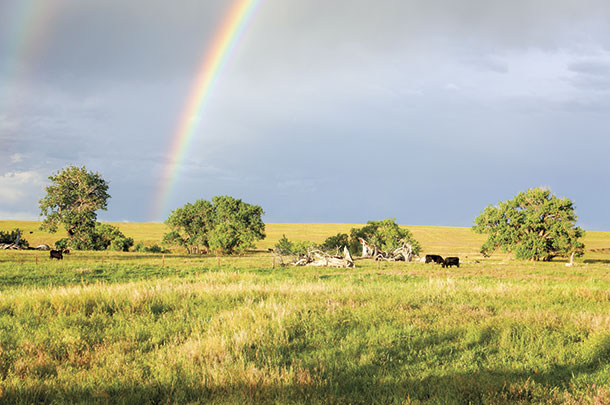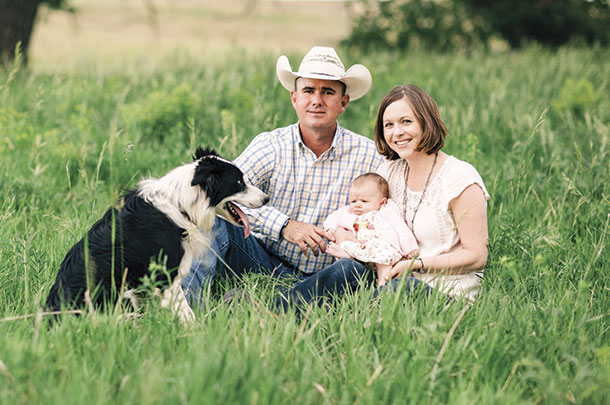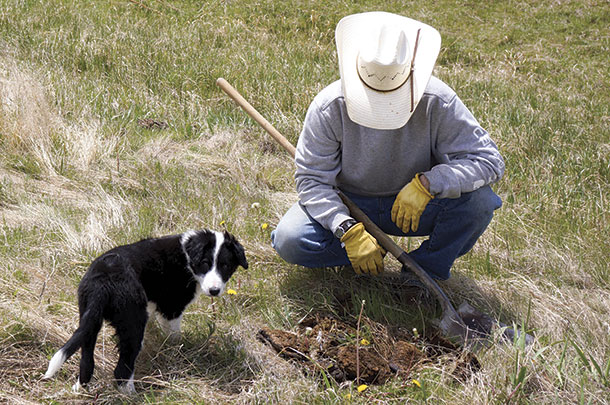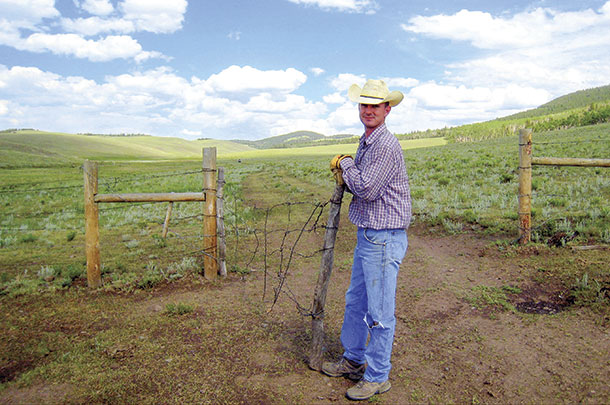“When I was 18, my goal was to have 500 cows by the time I was 30,” he says. “I probably had a thousand people tell me I wouldn’t succeed in the cattle business. If I had listened to them, I wouldn’t be where I am today.”
With a $12,000 pickup and a sound, well-thought-out business plan, Trainor has built up a cattle business that would make even some seasoned cattle producers envious. Starting out small with some leased land and trader cattle, 10 years later he now calls home the 26,000-acre Lowry Ranch in Arapahoe County.

The ranch is located near the small town of Watkins, which is 10 miles east of Denver. Although Watkins, Colorado, only has about 30 residents, Trainor jokes he has 5 million neighbors bordering the perimeter of his fence.
The Lowry Ranch serves as home base, but Trainor also keeps a second grazing lease in Weld County. Between the two ranches, the operation is 60 percent cow-calf, 30 percent yearlings and 10 percent custom grazing.
Trainor made the decision to include yearlings and custom grazing as part of a management plan that addresses a fluctuating cattle market and anything Mother Nature may have in store, including drought.

“The cattle cycle and the cattle market dictate what type of cattle we run here,” Trainor explains of his management. “A percentage of the cows are short-term, and some are what I call trader-type cows that we turn over quicker.
Our land base grew exponentially at the top of the cattle cycle when cattle where high, and I couldn’t afford to pay $3,000 for a cow. I have always had to be creative in what I buy and how I buy it,” he explains.
Motivation and goal setting are two attributes he admits are key to his success. “When you are motivated, and set short- and long-term goals, they become the driver,” he explains. “It’s a pretty powerful tool. Being honest with yourself and having some goals written down that you can look at will get you through the hard times.”
“You have to develop a mindset that failure just isn’t an option,” he confesses. “I had tons of people say, ‘How will you ever buy a ranch? How will you ever make it work?’ I just refused to accept that, and I think it boiled down to attitude. A huge part of my success has been finding the positive-thinking, progressive people early on,” he adds.
Freshly out of college, this young cattleman says the biggest challenges to starting up a ranching operation were the capital requirements needed and access to land. He also made it a goal to work full-time for at least six years while he built his cow herd, a land base and a reputation with a banker.
“I wanted to build up a big enough operation that I could justify quitting my full-time job,” he explains. “I think that is how a lot of young people have to start if they aren’t inheriting something.”

“There are a lot of opportunities out there to break into this business,” Trainor continues. “You just have to be looking for them and realize they probably won’t be perfect. For me, working full-time allowed me to reinvest all my profits from the business back into it and continue to grow. Having that full-time job solved a lot of cash-flow problems.”
Buying land isn’t an option for most people just starting out. “I leased everything I could, and that would pencil out on paper,” Trainor notes. “Young producers need to realize they aren’t likely to get the good ranches when they are just beginners.
They are more likely to get the land no one else wants. There is land available; you just have to be willing to put some elbow grease into it.”
Trainor has learned firsthand about putting some work into improving a ranch. The Lowry Ranch had been without a grazing lessee for seven years before Trainor’s application was chosen from a pool of 18 applicants by the Colorado State Land Board.
Portions of the ranch were deemed ungrazable, mostly because it lacked fencing and water sources. Trainor has spent the last three years adding 20 miles of pipeline, several new water tanks, wells and storage tanks, and 24 miles of high-tensile fence.
“There wasn’t a lot of infrastructure when I came here,” he explains. The Colorado State Land Board invested a lot into new infrastructure, and partnerships with the Nature Conservancy and the Natural Resource Conservation Service helped pay for the rest of it.

“They were an important part of helping me build this ranch up so it could handle the type of grazing I wanted to do,” he says. “I’ve been lucky to have good partners who are committed to seeing this place work.”
Continuing education is also important to Trainor, so he regularly attends educational events just to learn. “I think you need to be a lifelong learner and be willing to try new ideas. If you don’t get yourself out there, you won’t learn about new and better ways to do things.
Most of the good ideas I have had, I stole from someone else,” he says. “This business is dynamic and constantly changing, and a young producer’s odds are stacked against them. The best thing they have going for them is knowledge.”
Trainor is involved with management groups like Ranching for Profit and Holistic Management International, so he can network with like-minded, successful ranchers who are willing to share ideas to improve their operations. He also takes part in an executive link program with the Ranching for Profit group that meets three times a year and allows him to network with progressive-minded people.
“The benefits of this group are far-reaching,” Trainor says. “Everyone in it has big ideas and are willing to share them. It is a group of open-minded people always looking for something bigger and better. I think the power of positivity is important. I want to surround myself with positive people.” ![]()
PHOTO 1: Trainor Cattle Co. completing fall work.
PHOTO 2: The Lowry Ranch
PHOTO 3: Nick, Raquel and Grace Trainor, along with their cow dog Pete.
PHOTO 4: Trainor and Pete checking for dung beetles on Lowry range. Soil health and grazing management is the centerpiece of the operation.
PHOTO 5: The Lowry Ranch has needed some improvements since Trainor leased it. New water sources and fencing have been added to make grazing more efficient. Photos provided by Nick Trainor.
Gayle Smith is a freelance writer from Potter, Nebraska.






